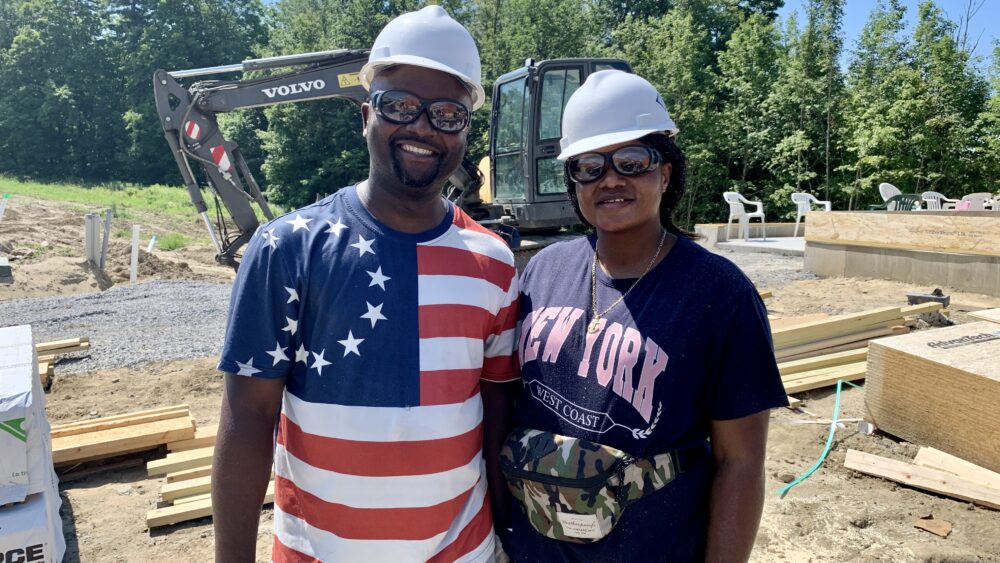Sweat equity is a cornerstone of Habitat for Humanity’s mission. This concept embodies the spirit of community, hard work, and personal investment in creating affordable housing solutions.
Sweat equity refers to the non-monetary contributions that future homeowners make towards their Habitat home. Once selected, Habitat homeowners must partner with us throughout the process. At GMHFH, we want our homeowners to feel invested in the construction of their future homes.
Sweat equity is a way for families to invest their time and effort into building their own homes or those of other Habitat partner families. This investment goes beyond just physical labor; it’s about building community, learning valuable skills, and taking an active role in achieving the dream of homeownership.
The idea behind sweat equity, families working side by side with volunteers to build their homes, goes back to even before Habitat for Humanity was founded in 1976.
Clarence Jordan, the founder of Koinonia Farm where Habitat for Humanity began, dreamed of helping families break the cycle of poverty and helping to end injustices that barred families of color from achieving economic equity. At the farm, he invited families of all races to live in the community. Together, with farm residents Millard and Linda Fuller (the founders of HFH), they developed the concept of “partnership housing,” where those in need of decent homes would work alongside each other to build affordable houses.
This approach informs our emphasis on sweat equity: all of us working together so that homeowners around the world are able to achieve strength and stability as they build better lives for themselves and for their families.
How Sweat Equity Works
At Green Mountain Habitat for Humanity, sweat equity is a transformational experience for families and a fundamental part of the homeownership program.
A single head of household must complete 200 hours of sweat equity, with at least 75 of those hours helping to build their home or the homes of others. Two heads of household must complete 400 hours of sweat equity with at least 150 hours at the home build site.
“Sweat equity is a crucial part of our program,” said Maeve Looney, Family Services Coordinator at Green Mountain Habitat for Humanity. “We believe that it helps set families up for long term success by providing them with construction and maintenance skills, as well as by building a strong sense of community.”
Future homeowners partner with Habitat by contributing their time and effort in various ways:
- Construction Work: Families help build their own homes or those of other Habitat families.
- ReStore Volunteering: Helping at the Habitat ReStore, assisting customers or organizing inventory.
- Administrative Tasks: Writing thank-you notes to donors or helping with office work.
- Homeowner Education: Participating in classes on mortgage management, home maintenance, and financial literacy.
The Benefits of Sweat Equity
Sweat equity is more than just a way to build houses; it’s a method of building hope, community, and self-reliance. It embodies Habitat for Humanity’s philosophy of giving families a “hand up, not a handout.” By participating in the construction of their homes, families gain a deeper appreciation for their new property and a stronger connection to their community.
Sweat equity also helps families achieve a deeper sense of connection to their homes. “It’s an amazing thing to look around and at every place you look and there’s a story,” said one Habitat homeowner. Other families note that the process of building their own homes help them become more knowledgeable abouts its maintenance.
Sweat equity is an essential component in creating affordable housing solutions that truly transform lives. It’s a testament to the power of hard work, community collaboration, and the human spirit in overcoming housing challenges.
To get involved, visit our website to apply for a home or volunteer to help build one.


Comments are closed.